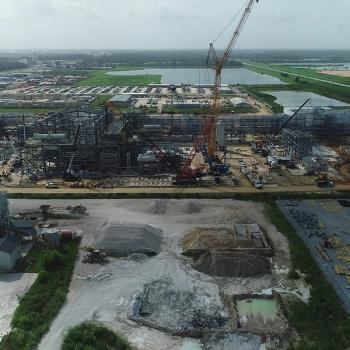
Natural gas generation is changing, not fading
Many European energy companies are struggling to find buyers for gas power plants. Others, meanwhile, are planning even more gas-fired generation capacity with carbon capture capability. Gas is on the decline, many analysts observe, but not as fast as coal. Meanwhile, oil production and consumption could peak in the next ten years.
In Europe in particular, not as many are employed in gas extraction as are in coal. Now, Bloomberg is reporting that $100 billion could be lost from building pipelines and other gas infrastructure whose long-term retirement is forecast as inevitable as countries near and far commit to carbon neutrality.
It is true that the cost of renewables such as solar and wind are dropping, but there remains no short-term answer to those technologies’ intermittent nature. The only viable technology is battery storage, and those technologies remain undeveloped and there in no timetable to their widespread viability.
Hydrogen fuel and carbon capture, utilization, and storage (CCUS) of natural gas is growing in popularity and viability, but still a long way off. Hydrogen production costs remain too high (for now) despite optimistic forecasts. Some believe they would never drop low enough to make the only purely renewable type of hydrogen—the only that uses electrolysis—economically viable. Meanwhile, the expansion of liquefied natural gas (LNG) may well be a way to lower the carbon footprint of oil & gas operations. Improving LNG’s emissions profile, as well as addressing methane venting, fugitive emissions, and flaring, may be a larger opportunity to reduce greenhouse gases (GHG) than CO2.
The current installed capacity of LNG is about 460 million tons per annum (MTPA). Demand is expected to double in the next 15 years. Final investment decisions should be made for another 100 MTPA of LNG over the next year or two. While the LNG market is rapidly growing, the technology is advancing to become cleaner and greener. For example, the adoption of low-emission equipment can be integrated with combined cycle plants, renewables, hydrogen, and CCUS.
Energy demand will continue to rise with a growing and increasingly industrialized population. Nearly a billion people currently do not have access to electricity. As a result, it will be difficult to counter the demand for coal in the developing world, let alone the use of natural gas.
Newsletter
Power your knowledge with the latest in turbine technology, engineering advances, and energy solutions—subscribe to Turbomachinery International today.




